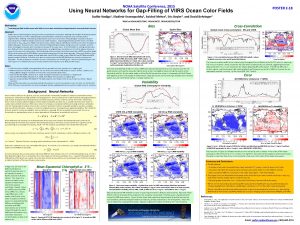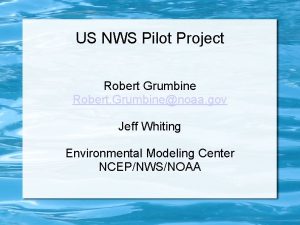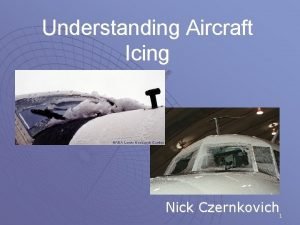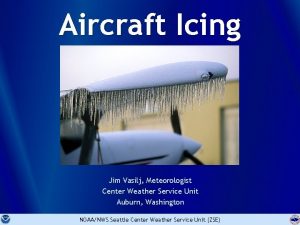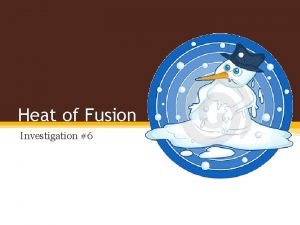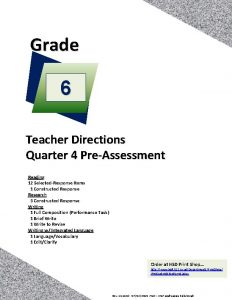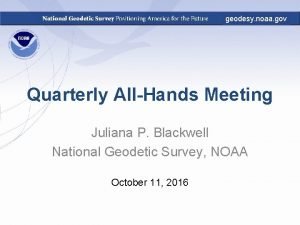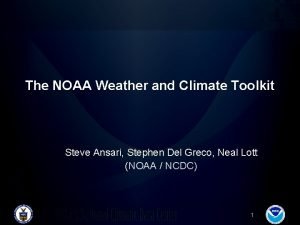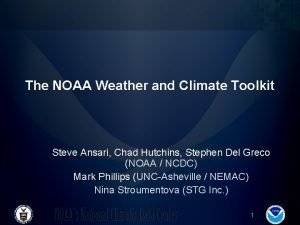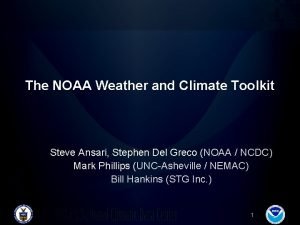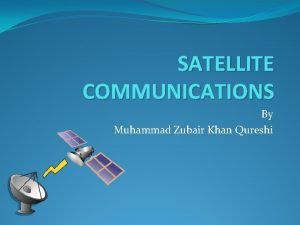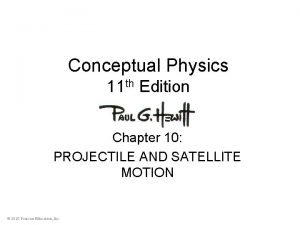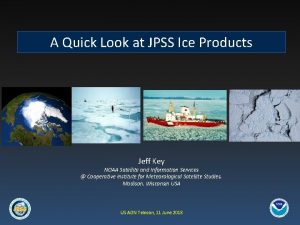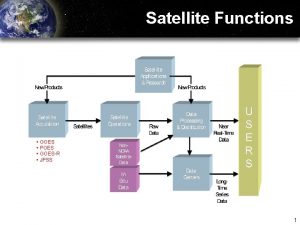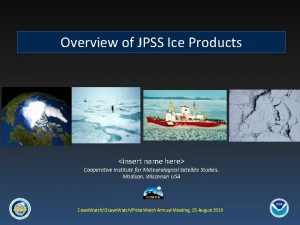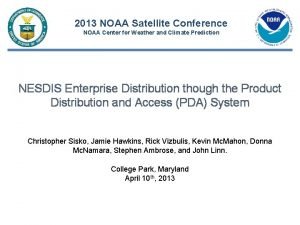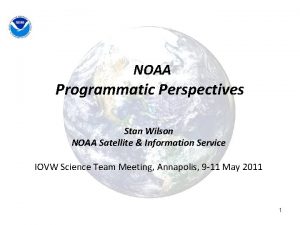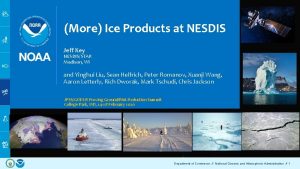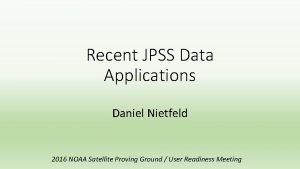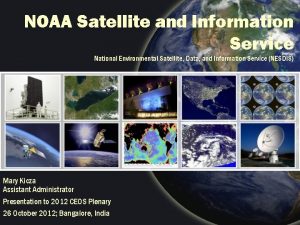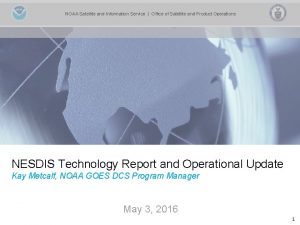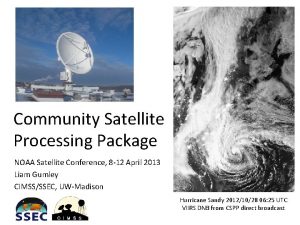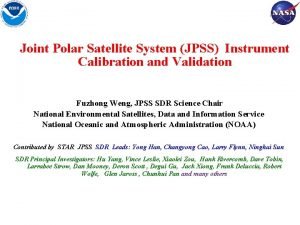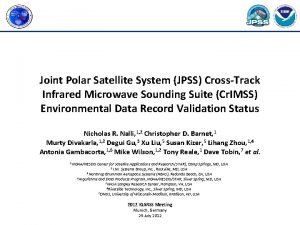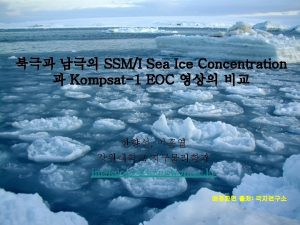JPSS Ice Products Jeff Key NOAA Satellite and


















- Slides: 18

JPSS Ice Products Jeff Key NOAA Satellite and Information Services @ Cooperative Institute for Meteorological Satellite Studies, Madison, Wisconsin USA JPSS AK Demonstration for the Alaska Sea Ice Program, 10 April 2018

Purpose This presentation is a brief introduction to JPSS ice products, which you will evaluate during this 1 -2 week demonstration. It is a training presentation, but the training goes in both directions. Our primary goal is to acquaint you with our ice products. In return, we hope to get feedback from you on how you might use the products and what we can do to make them better for your applications. 2

The Teams Cooperative Institute for Meteorological Satellite Studies (CIMSS), University of Wisconsin-Madison: • • Yinghui Liu Xuanji Wang Rich Dworak Aaron Letterly Geographic Information Network of Alaska (GINA): • Jay Cable • Carl Dierking • Eric Stevens JPSS Program Office: • Bonnie Reed • Arron Layns 3

Quick Guides Four product ”quick guides” and this presentation are available at: http: //stratus. ssec. wisc. edu/jpss/ak-demo 2018/ 4

JPSS Snow and Ice Products NPP/JPSS VIIRS • Snow cover (binary) • Snow fraction • Ice thickness and age • Ice concentration • Ice surface temperature • Ice motion (experimental) • Sea ice leads (future) • Polar winds AMSR-2 on GCOM-W 1 • Snow cover • Snow depth • Snow water equivalent (SWE) • Ice characterization • Ice age class (first-, multi-year) • Ice concentration • Ice motion (experimental) 5

VIIRS Ice Surface Temperature IST provides the radiating, or “skin”, temperature of the sea and fresh water ice surface under clear-sky conditions. It includes the aggregate temperature of objects comprising the ice surface, including snow and melt water on the ice. The VIIRS IST EDR provides surface temperatures retrieved at VIIRS moderate resolution for ice-covered oceans both day and night.

VIIRS Ice Surface Temperature Advantages: High spatial resolution (750 m) and high accuracy, as determined through validation studies with surface temperature measurements from aircraft campaigns (NASA Ice. Bridge). It has been shown to have a near-zero bias and a root-mean-square error (RMSE) of less than 1 K. Limitations: It is a clear-sky only product, and errors in the cloud mask produce errors in IST.

VIIRS Ice Concentration (animation) Ice concentration provides the fraction of an area covered by ice. It is calculated for every VIIRS moderate resolution band pixel (750 m) over unfrozen ocean and inland water bodies.

VIIRS Ice Concentration Advantages: High spatial resolution (750 m) and detail relative to passive microwave. Comparisons to Landsat-8 indicate that differing concentrations have an absolute magnitude of less than 10%. Limitations: Clear-sky only. Errors in the cloud mask produce errors in the ice concentration. The performance of cloud mask is generally better during the “day” (sunlit conditions) than at night. This difference can lead to cloud mask discontinuity in regions that include the terminator. Weekly Composite, 27 Oct 2016

AMSR 2 Ice Concentration AMSR 2 vs VIIRS Right: Enterprise VIIRS Sea Ice Concentration (SIC) along the Alaska Coast on April 27, 2017. Left: Passive microwave-derived sea ice concentration from NSIDC for the same area and day.

Satellite-Derived Ice Thickness Products APP-x Cryo. Sat-2 SMOS Ice. Bridge ICESat PIOMAS These are the monthly mean results for March 2012, except for ICESat sea ice thickness, which is a 34 -day average from 2 February to 31 March 2008.

Alaska VIIRS Sea Ice Thickness 14 Feb 2013, 14: 10 UTC VIIRS ice thickness provides estimates of sea, lake, and river ice thickness under clear-sky conditions. The ice surface may be covered by snow or, in the summer, melt ponds. The depth of snow is not included in ice thickness product. Calculations are done at VIIRS moderate resolution (750 m) for icecovered water bodies both day and night. It is not a direct measurement, but rather a model-based approach driven by other satellite products. 12

VIIRS Sea Ice Thickness Advantages: Solid physical foundation with all components of surface energy budget. Capable of retrieving daytime and nighttime sea, lake, and river ice thickness under both clear and cloudy sky conditions. Computationally efficient, easy to implement and maintain, flexible, and fast. Built-in parameterizations can be used if various satellite products are not available. Limitations: The accuracy of input parameters can significantly impact the accuracy of the ice thickness estimates. Thickness is sensitive to rapid changes in surface temperature. Averages over time are usually better than instantaneous estimates. Daytime retrievals are less reliable than nighttime retrievals. The uncertainty is large for ice more than a few meters thick. 13

Ice Motion The ice motion products provide the speed and direction of ice features over the past 24 hours. Ice motion is currently generated from AMSR 2, VIIRS infrared window (M 15), blended AMSR 2+VIIRS(IR), and the VIIRS day-night band (DNB). 14

Ice Motion Advantage: It clearly illustrates the medium- to large-scale motion of ice over a 24 -hour period. Limitations: AMSR 2 is ambiguous for melting ice, so AMSR 2 ice motion is of the highest quality during the winter, spring, and autumn. Cloud cover restricts the area coverage of VIIRS ice motion. Spatial averaging must be employed to achieve a useable result. Data latency and processing time constrain real-time generation. 15

Product Demonstration Processing Flow (Courtesy of Bonnie Reed) 16

Where will you get the products? GINA (Jay Cable) will make the “GIS-ready” products online for ASIP access. It will be a on a web page similar to what they provide for other products: 17

Let the demonstration begin! 18
 Noaa satellite images
Noaa satellite images Noaa satellite images
Noaa satellite images Jeff whiting noaa
Jeff whiting noaa Difference between functional and innovative products
Difference between functional and innovative products Icing
Icing Clear ice vs rime ice
Clear ice vs rime ice 4ps of pepsi
4ps of pepsi Contoh key partners
Contoh key partners Business model canvas tripadvisor
Business model canvas tripadvisor Cnh key club
Cnh key club Calories
Calories A bad robot by readworks characters
A bad robot by readworks characters Noaa webta
Noaa webta Noaa climate toolkit
Noaa climate toolkit Noaa ago
Noaa ago Noaa wct
Noaa wct Noaa wct
Noaa wct Satellite orbit definition
Satellite orbit definition Tossed ball conceptual physics answers
Tossed ball conceptual physics answers
